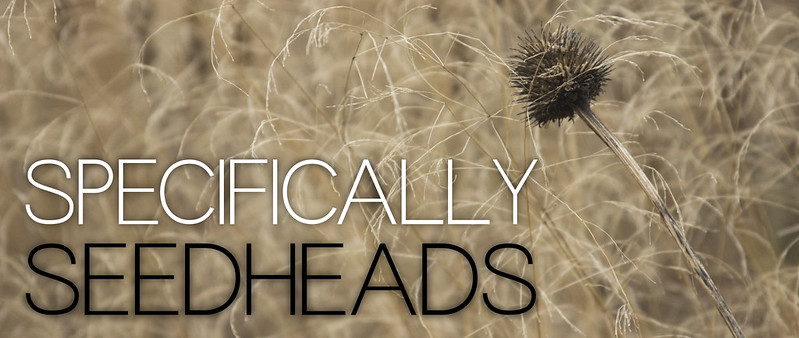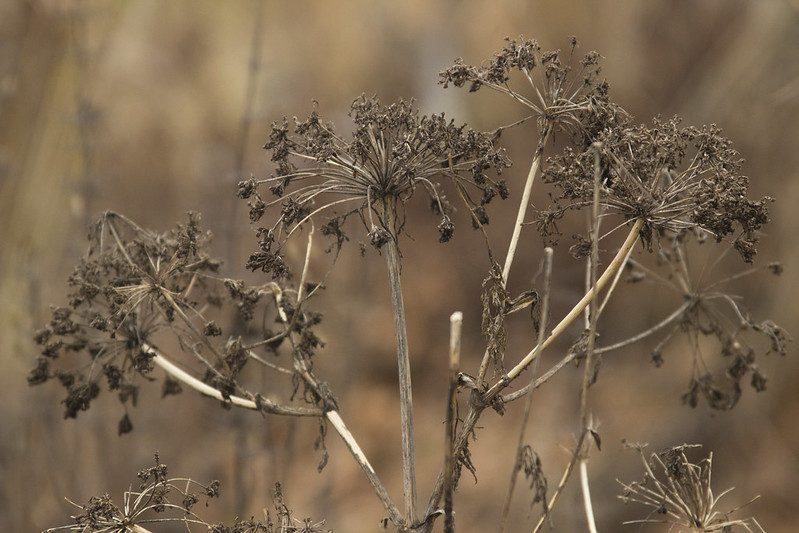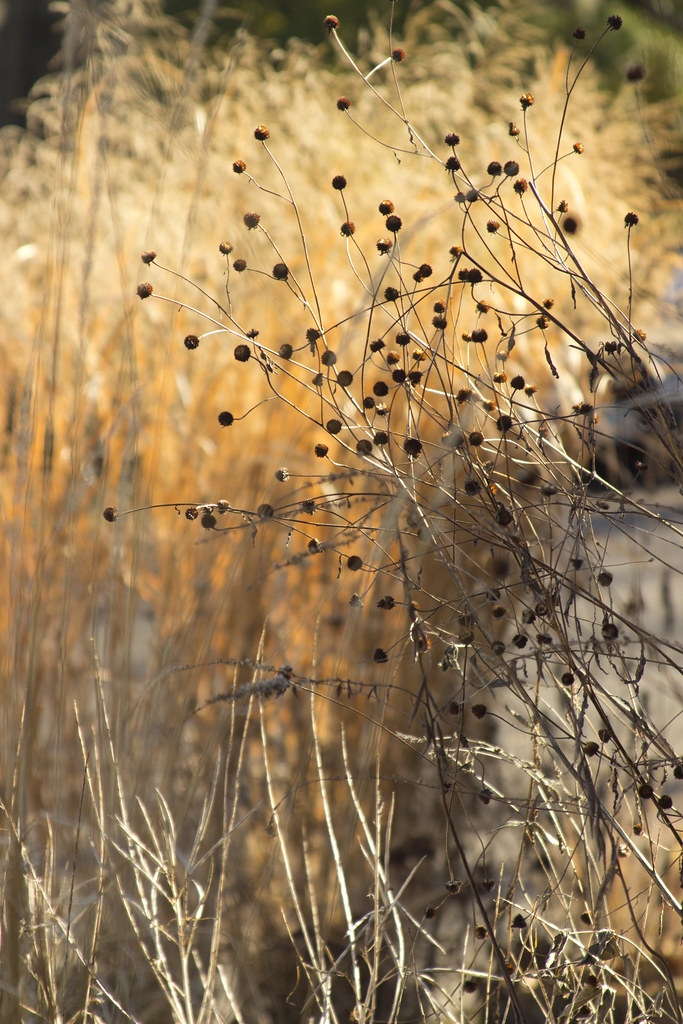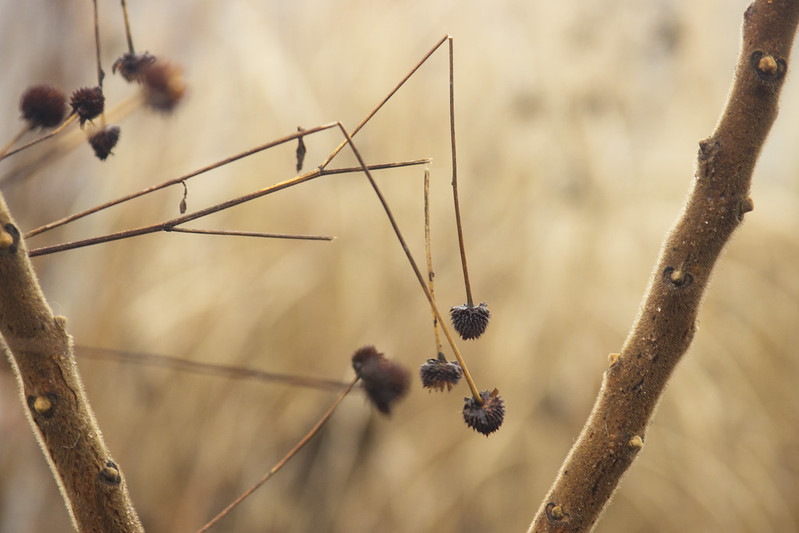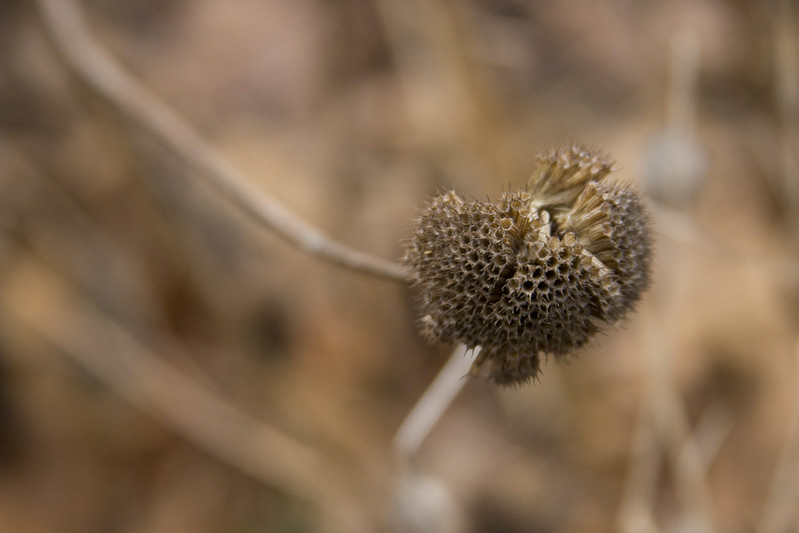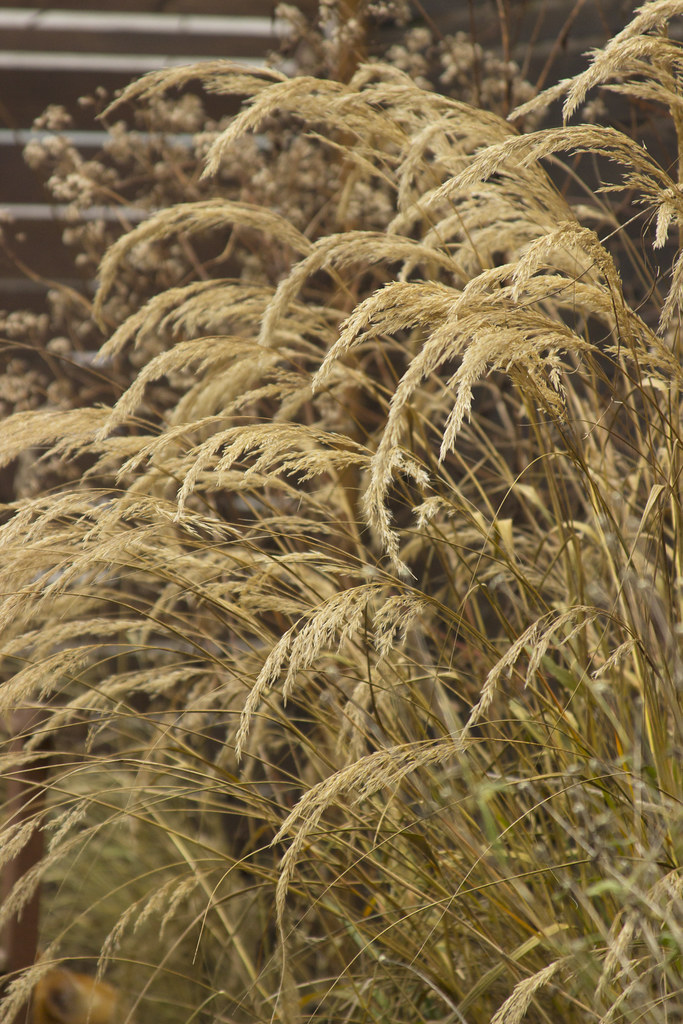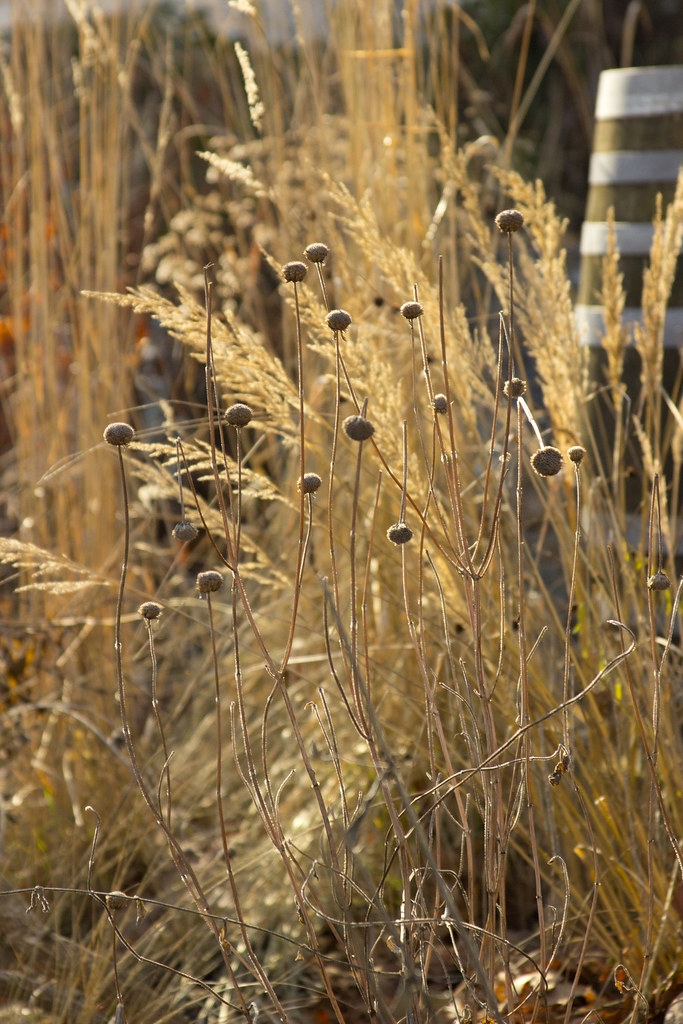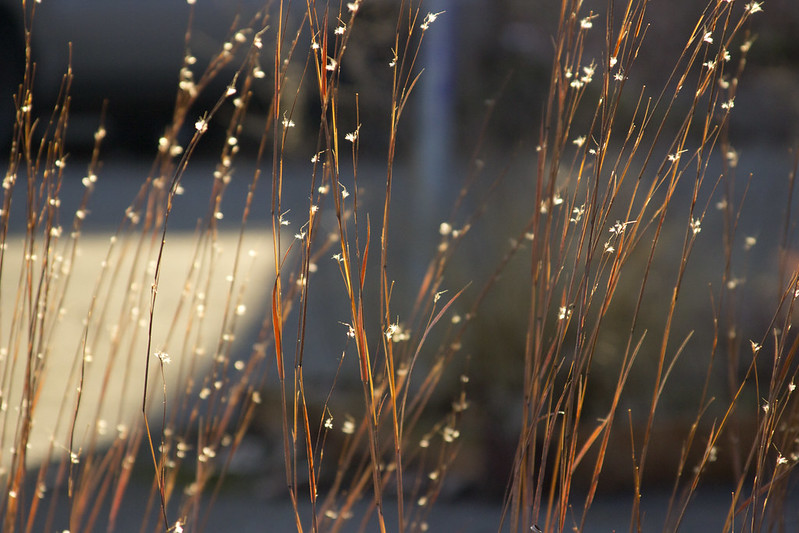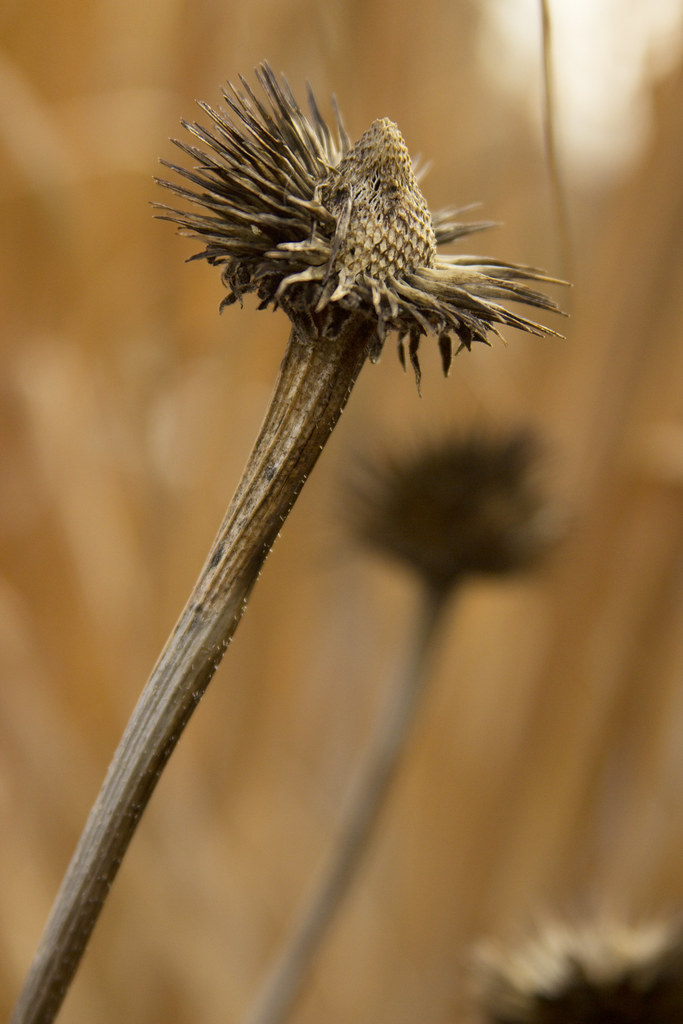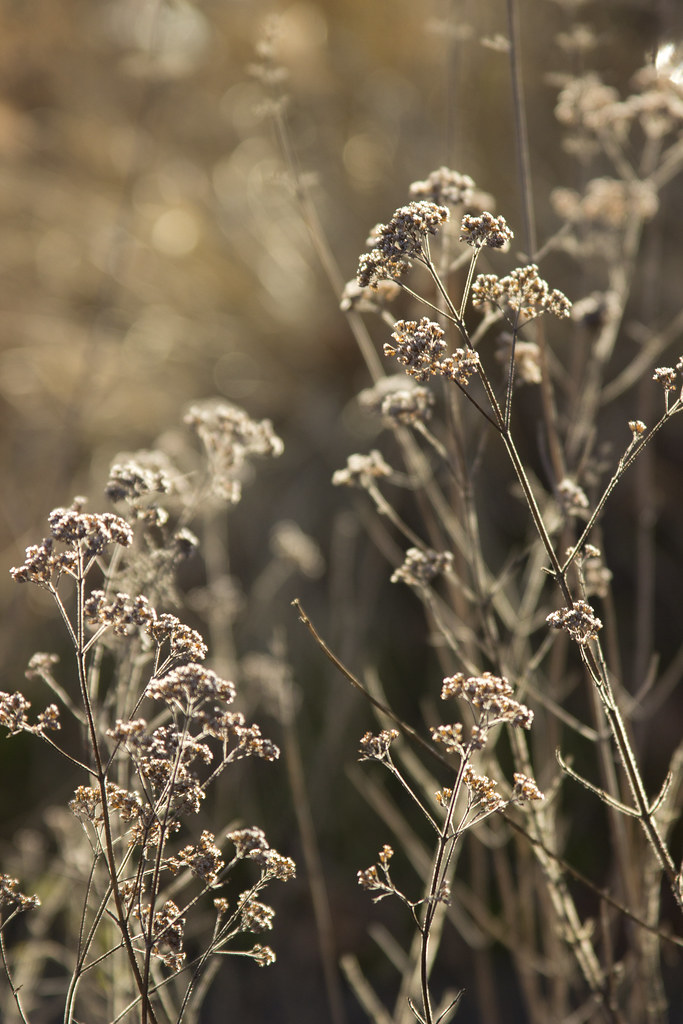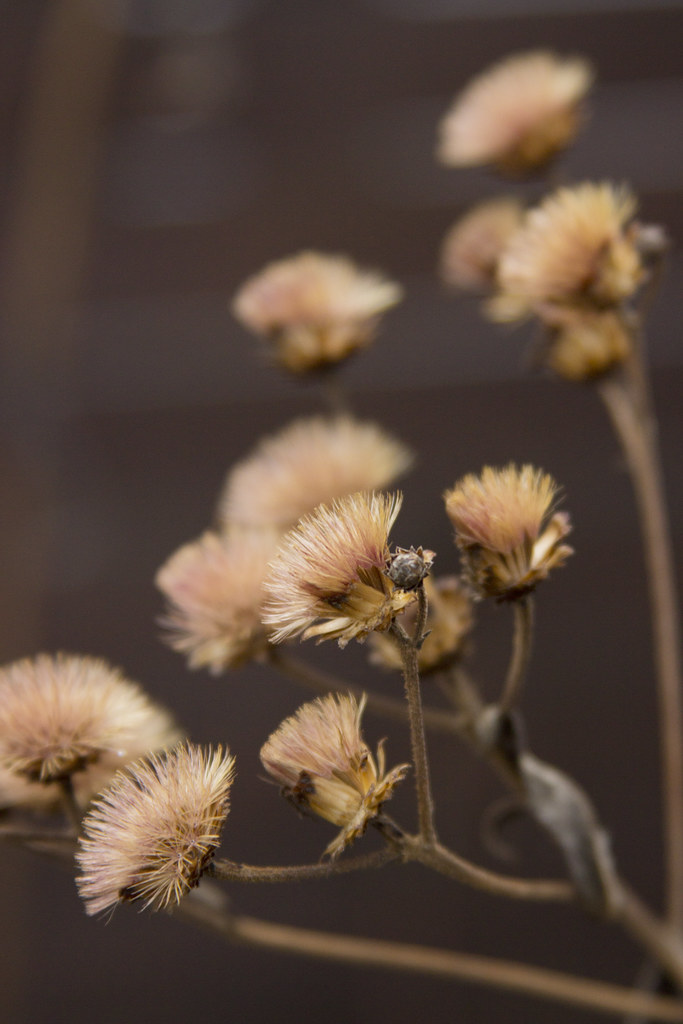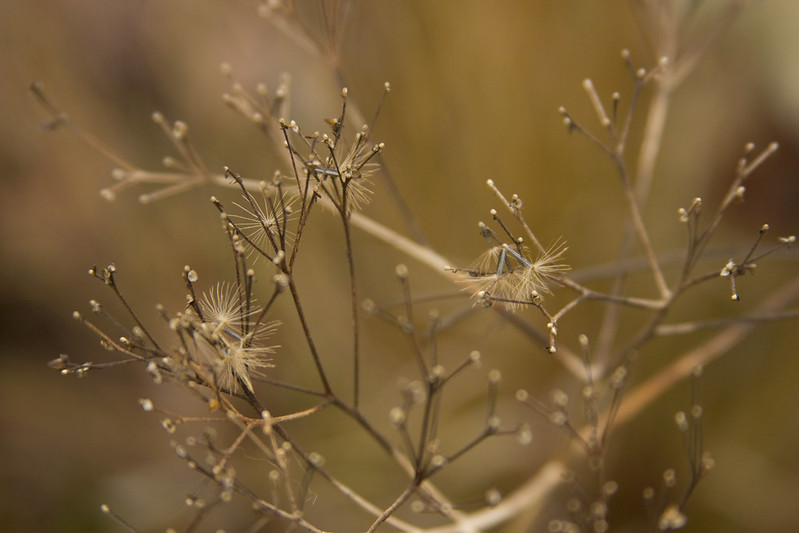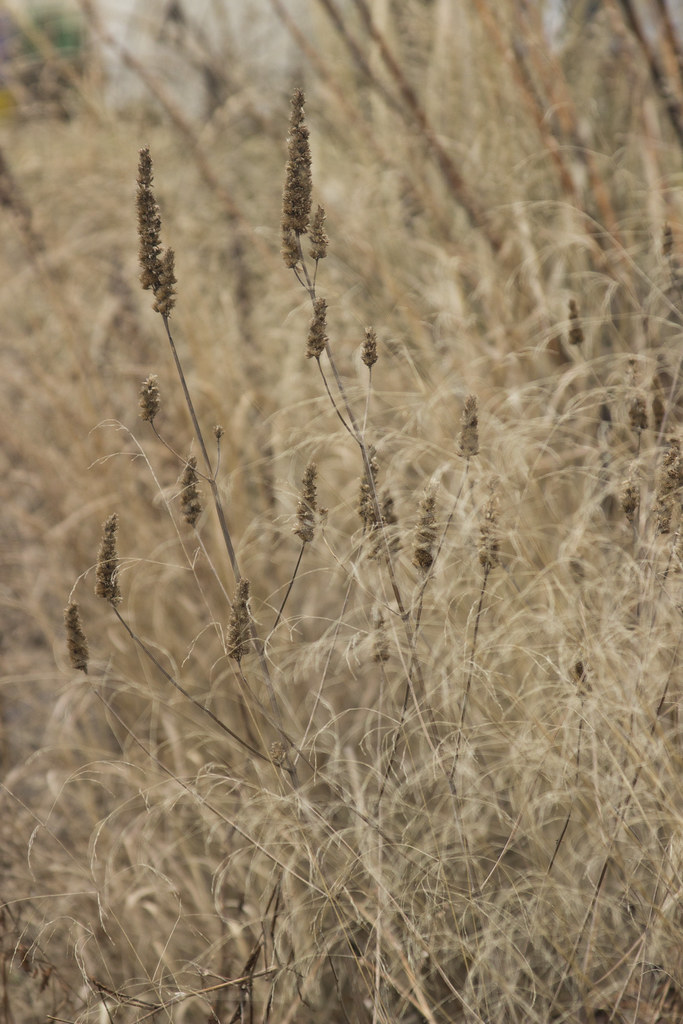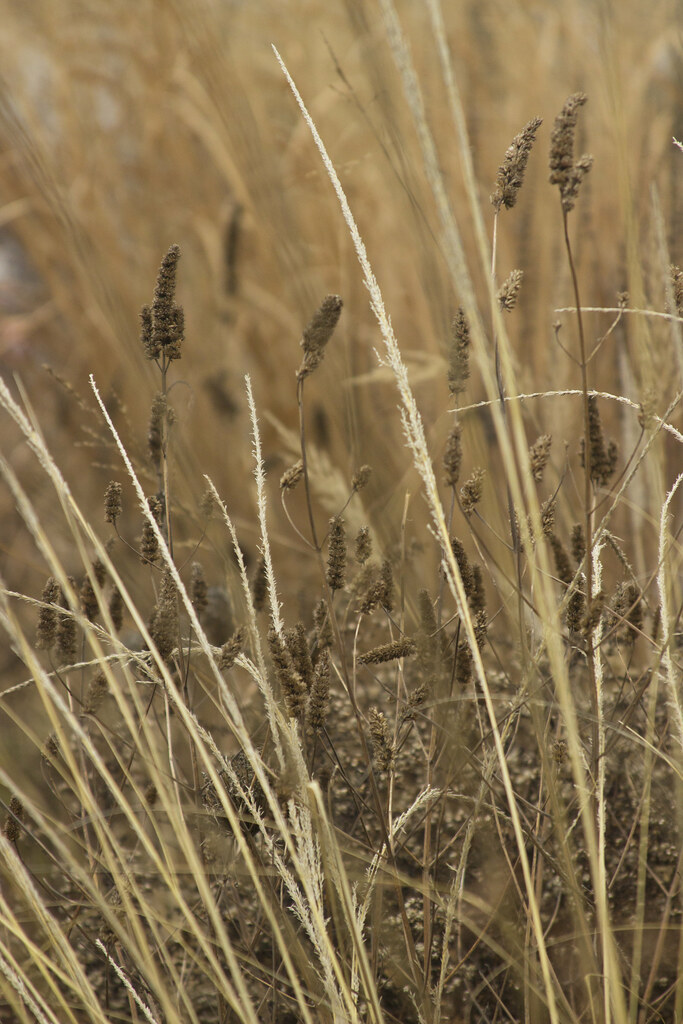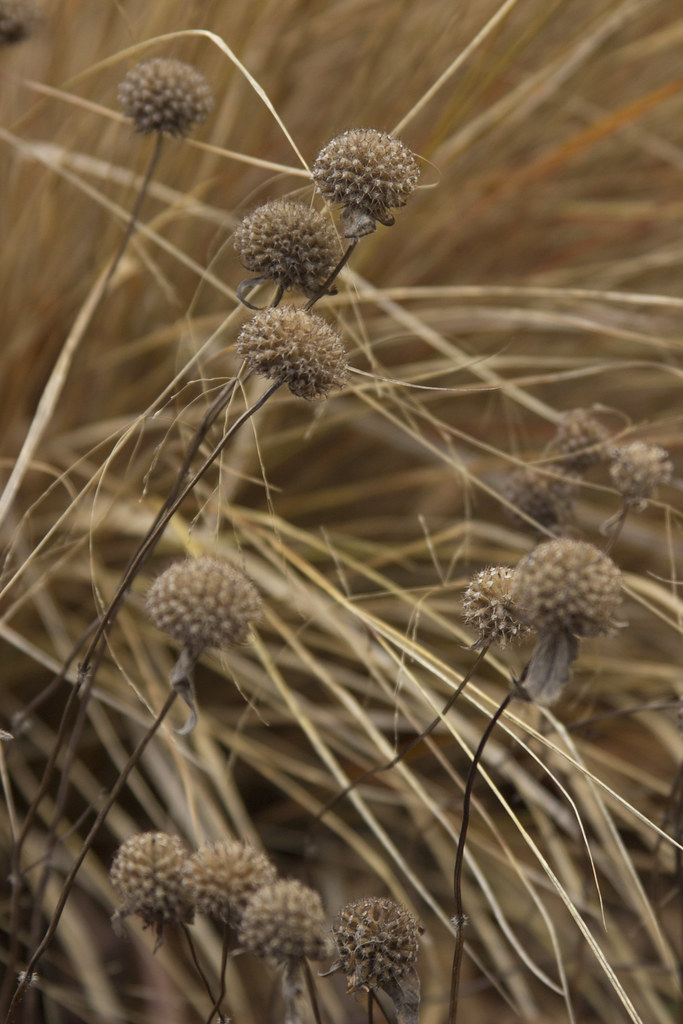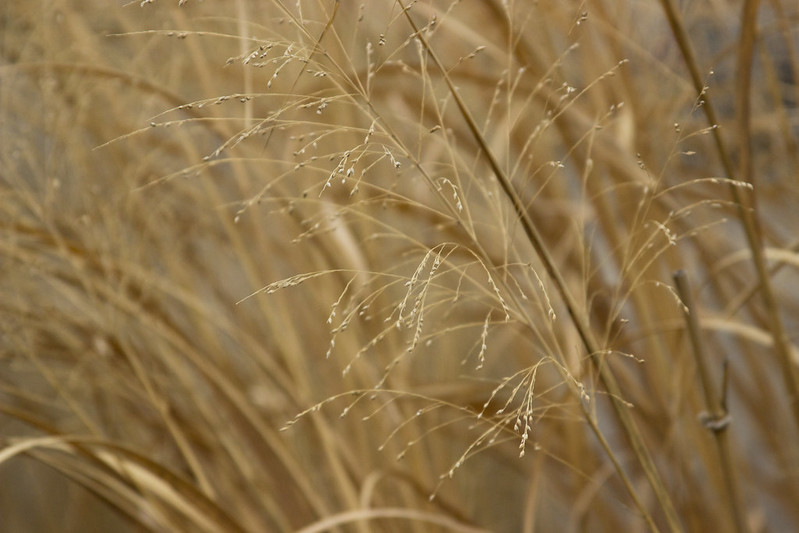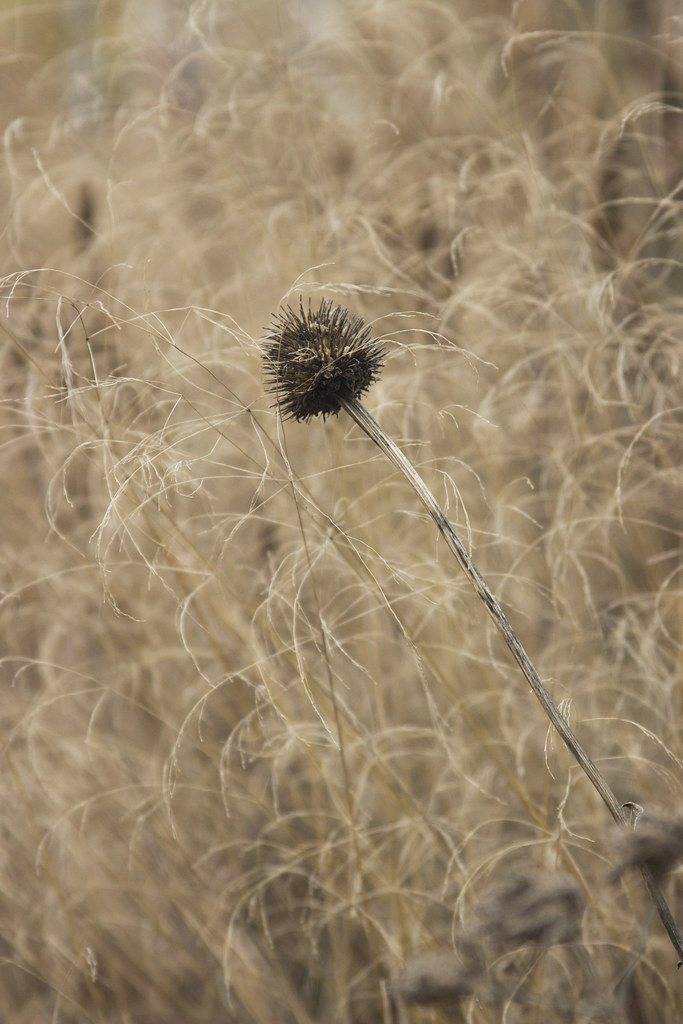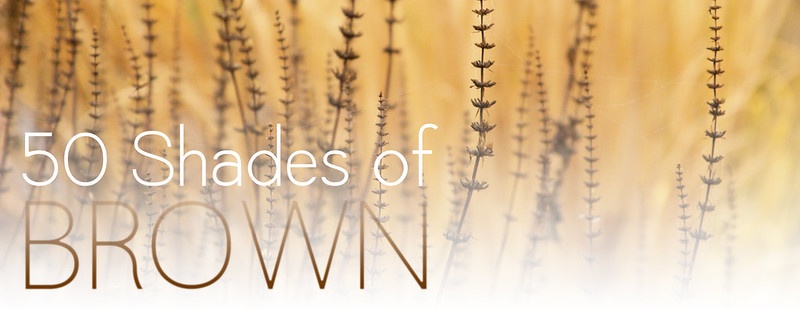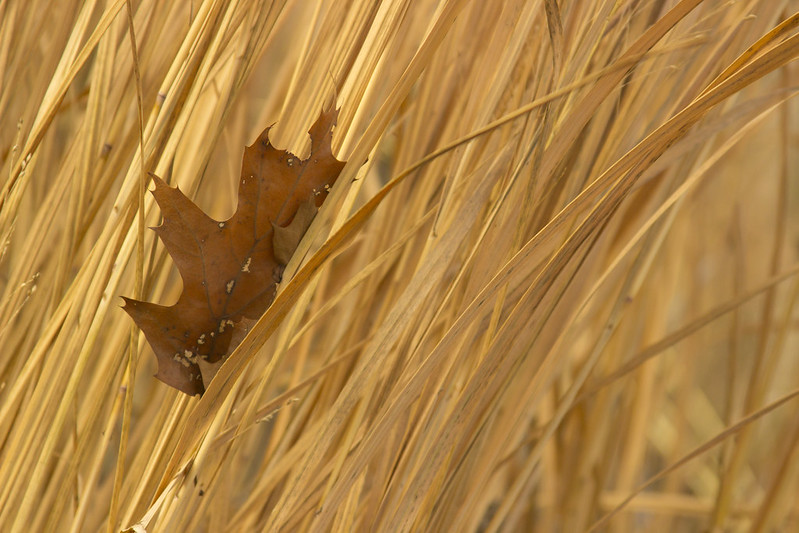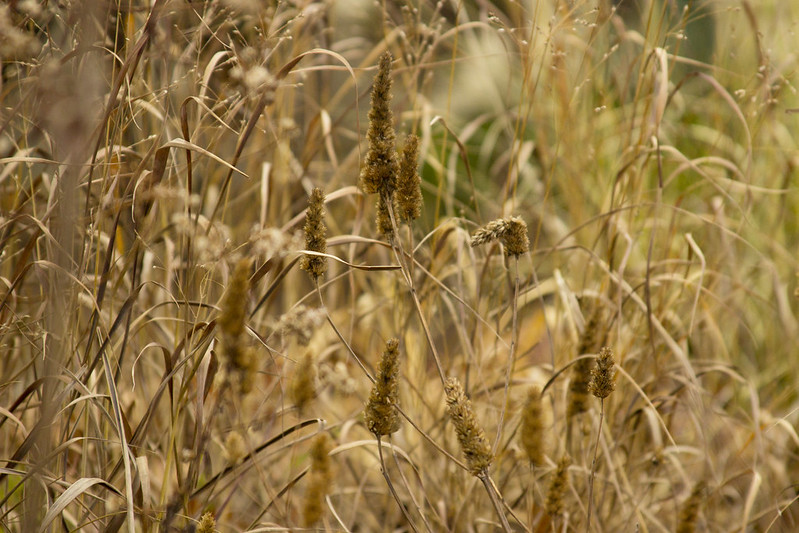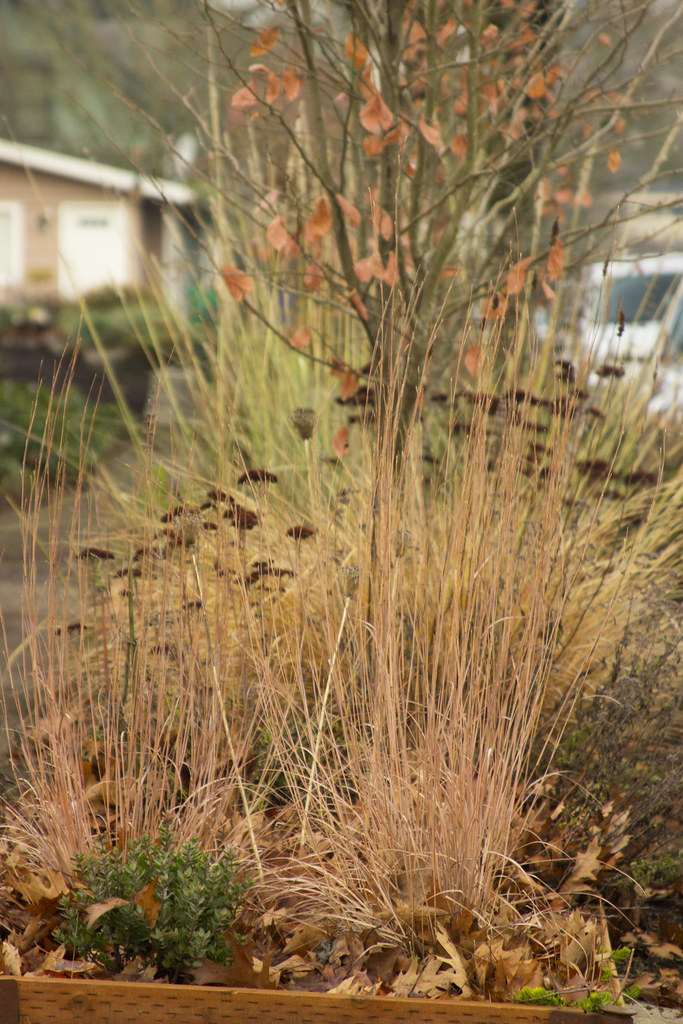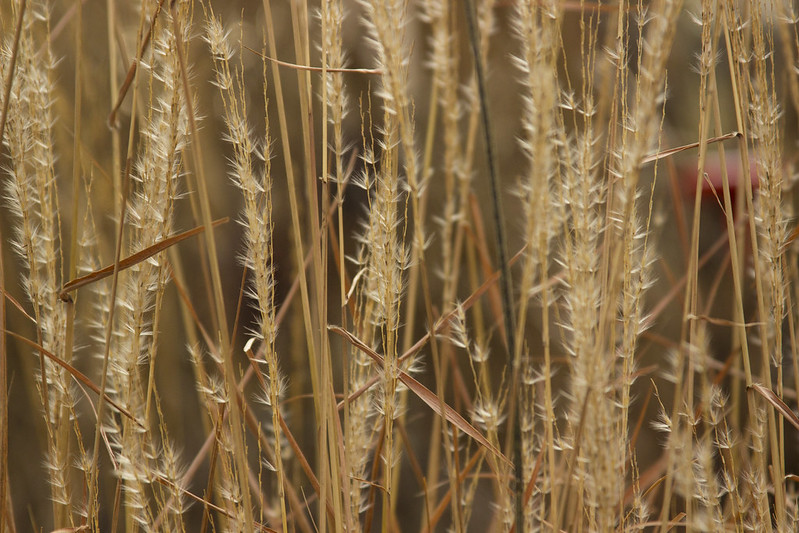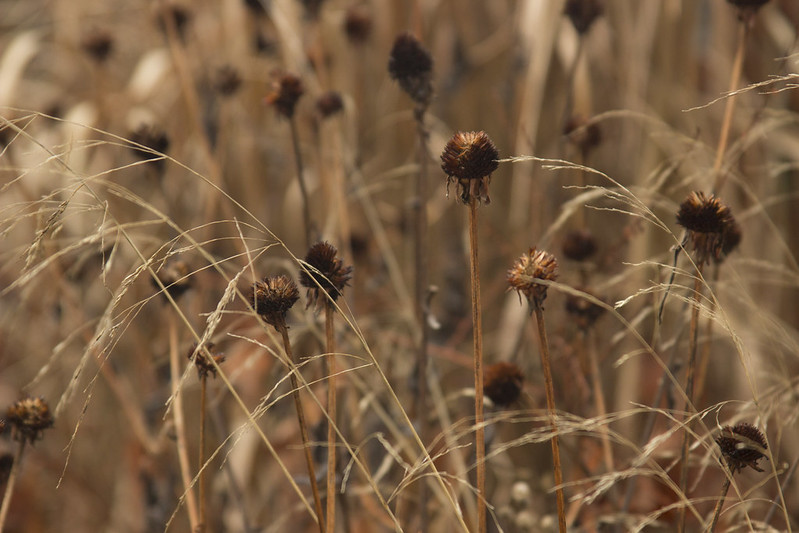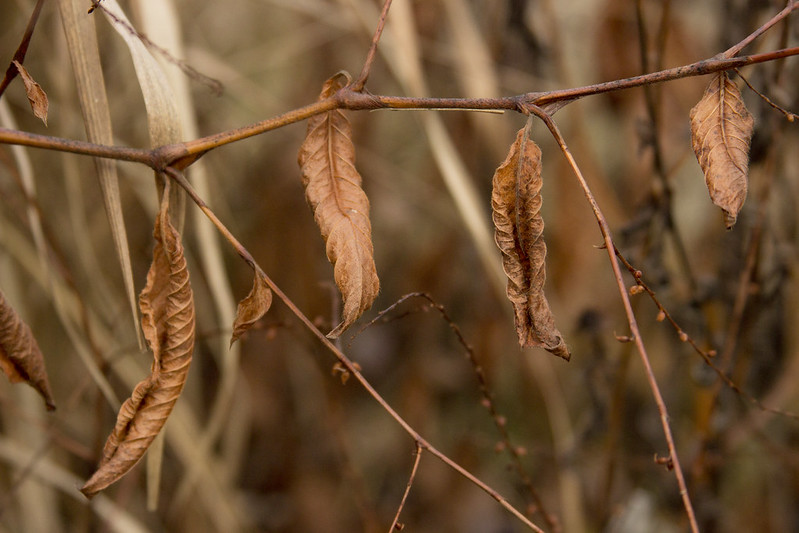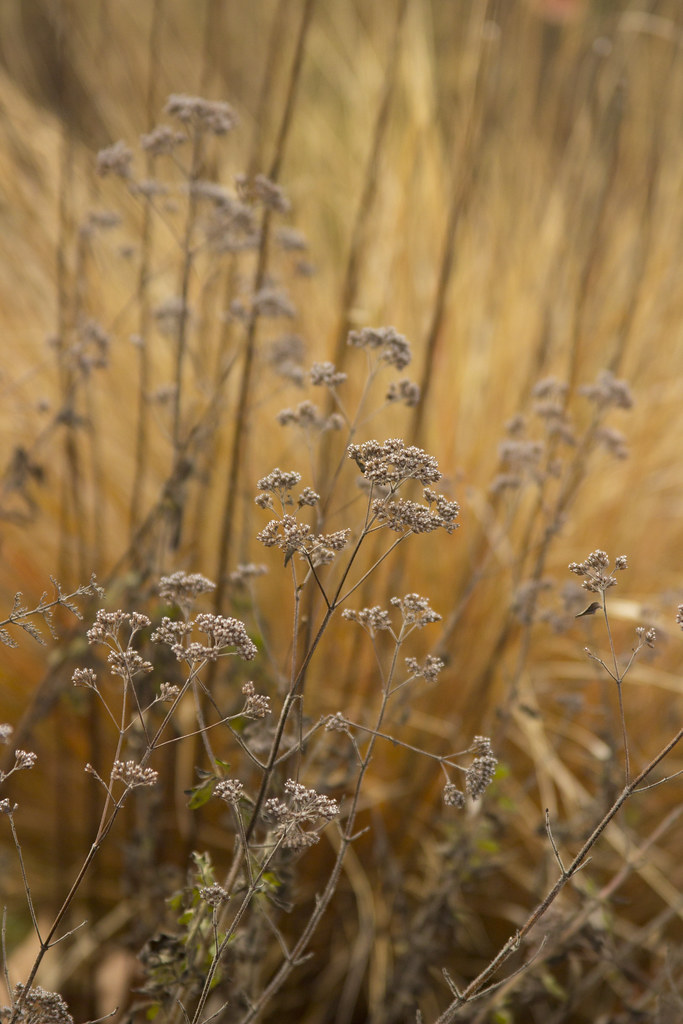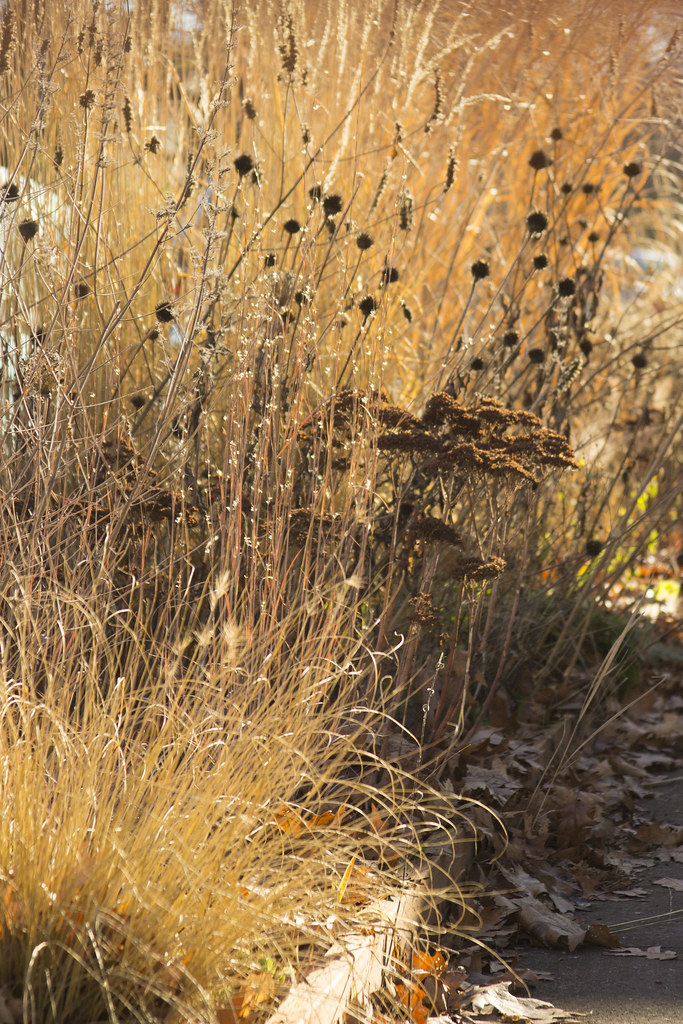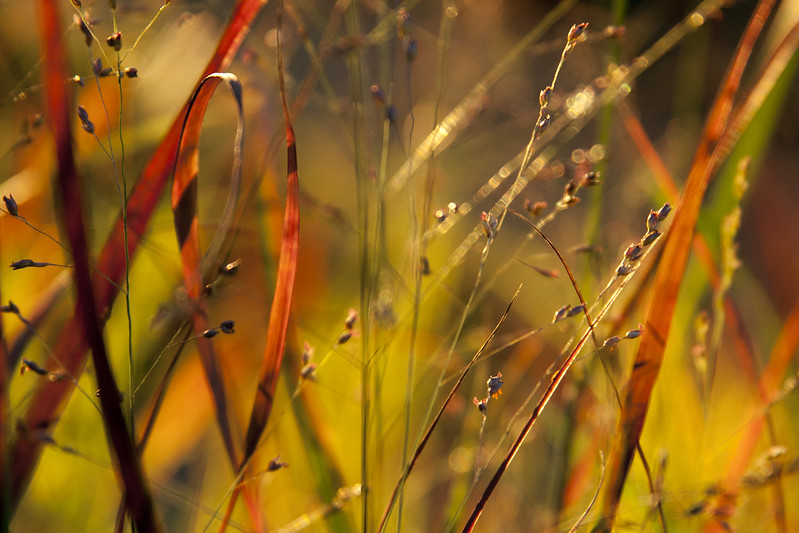
For todays post...let's take a trip into the not-so-distant past...last September, to be precise.
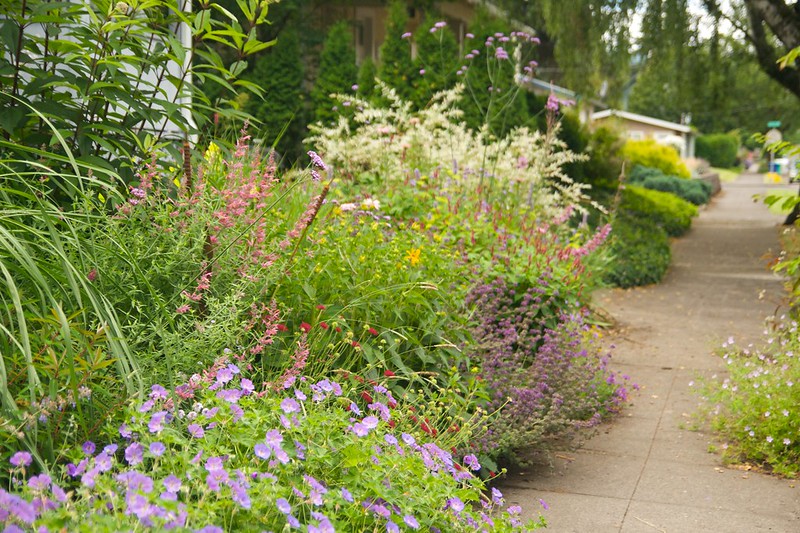
When we first moved to our house in SE Portland, I started digging up the lawn about a month after we moved in. One of our neighbors noticed, and one day, showed up on our front steps with a plant in his hands...a gift! It was a nice little Variegated Willow...a plant I have to admit I probably wouldn't have picked out myself (that's it in the background of this photo).
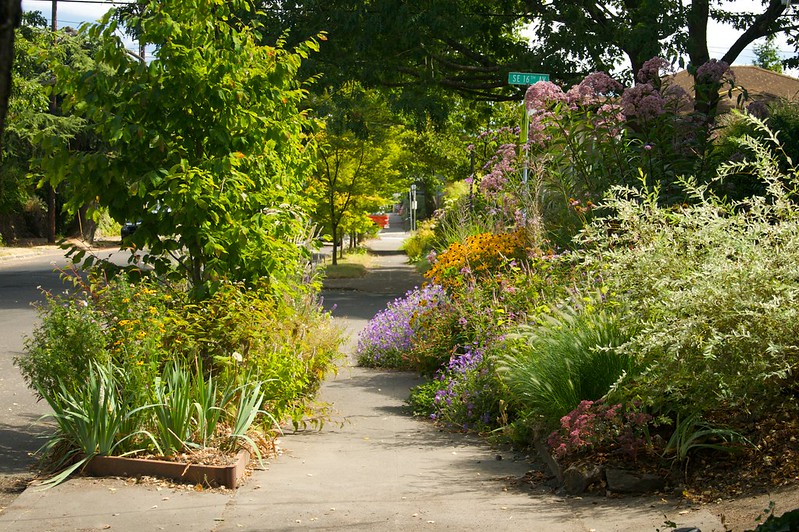
It was a nice enough plant...but I just couldn't find a good spot for it...I must have moved it at least 3 times in as many years. It was too big for my garden...and just didn't fit in. Every time I walked by, I would hunger for that space it was taking up!

In any case, this spring, as I posted previously, I planted some grasses (Panicum 'Cheyenne Sky') in the area adjacent to the Willow.

It was odd...but suddenly, since it was newly-planted and at the forefront of my mind, I started pondering that whole section of the garden once again.
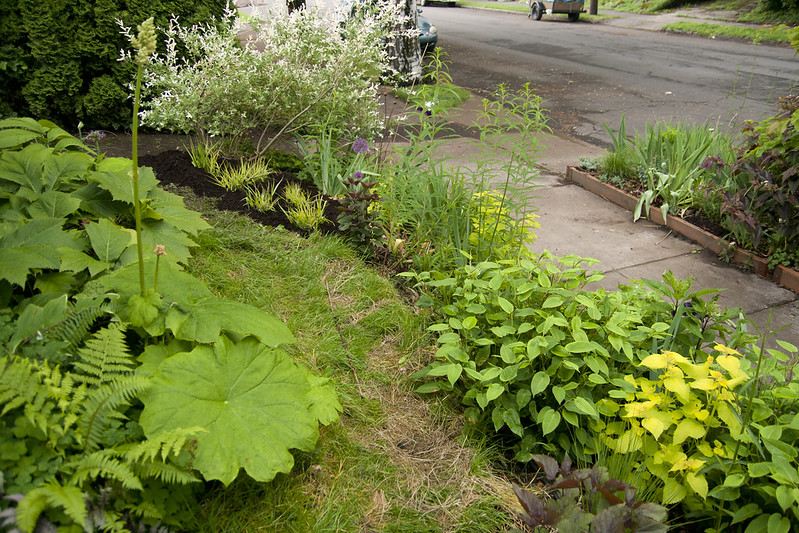
Seeing the grasses...and imagining them as they grew...my mind swam with possibilities, which I hinted at here.
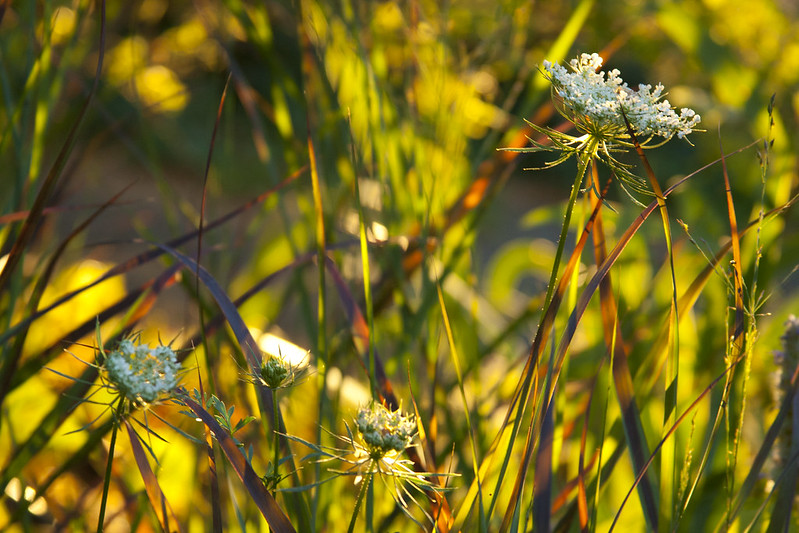
As spring turned to summer, I began to realize just how much I love this area now, with its grasses...I spent a lot of sunsets here...as the last rays of sun caught the Panicum.

And I finally admitted to myself what I've known all the while. The Willow had to go. I wanted to expand this new micro-meadow and really exploit the sunset in this area (which the Willow, unfortunately, blocked).

Happily, another gardener and blogger (Jenni at Rainy Day Gardener) said she'd take the Willow...which was a huge relief...it was a lovely plant...and just because it wasn't working in my garden didn't mean it had to die!
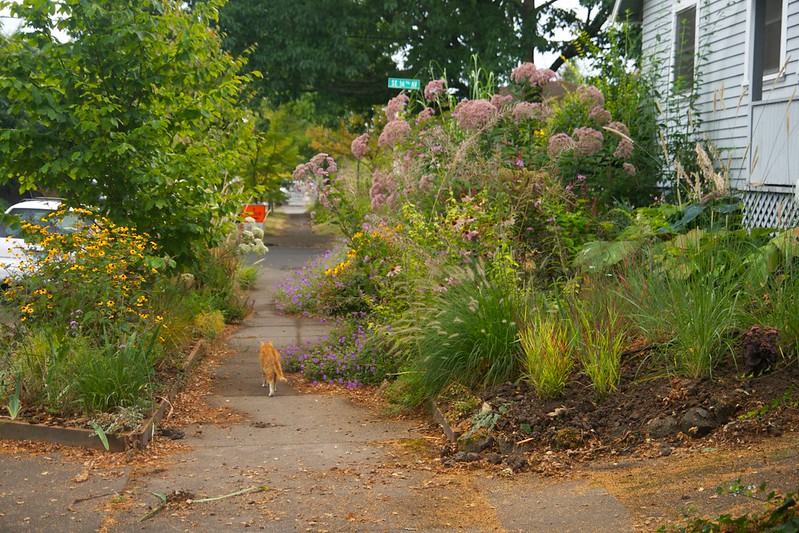
Another trip to my beloved Wind Dancer and I had several more Panicum 'Cheyenne Sky' to fill in the area.

It's funny to see how different the coloring is..on the right are the Panicums that I planted in the spring...on the left, the newly-planted ones...they have a much yellower tone, don't they!
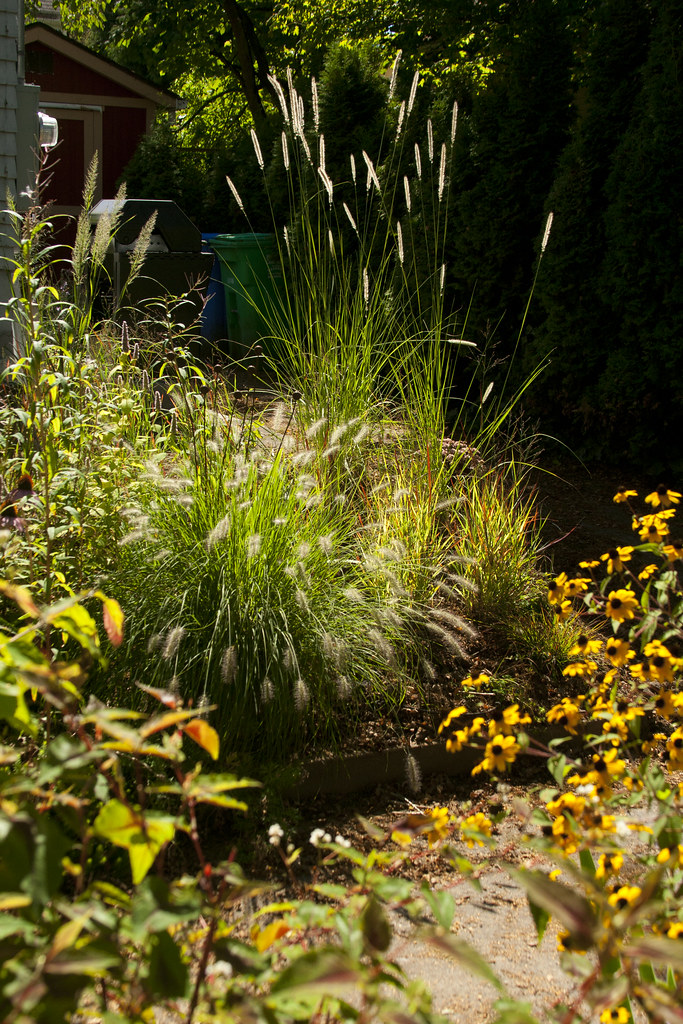
In the background, I planted a few Pennisetum macrourum I had purchased in the spring and was growing in a container (which they had rapidly outgrown...those puppies are vigorous)!
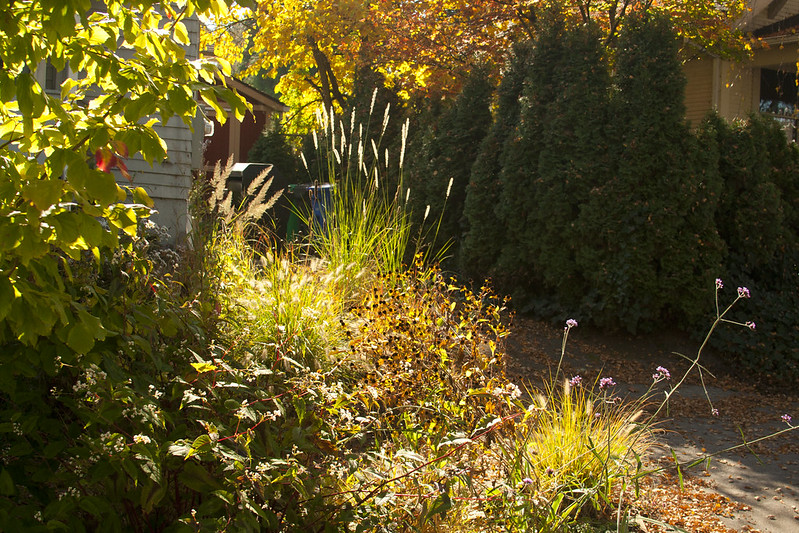
Thie Pennisetum is one of my favorite plants for catching light...and this clump echos another clump of the same grass in the facing parking strip...rhythm...it's a thing ;-)

I also randomly planted some Agastache 'Black Adder' that had been struggling in the parking strips and some Sanguisorbia 'Tanna' I had bought on impulse. It's too early to say exactly how it will mature...but I spent the rest of the summer/fall intensely enjoying the show!

Our grill is right next to this planting, so I spend almost every evening out here, waiting for whatever I'm grilling...and just enjoying the view.
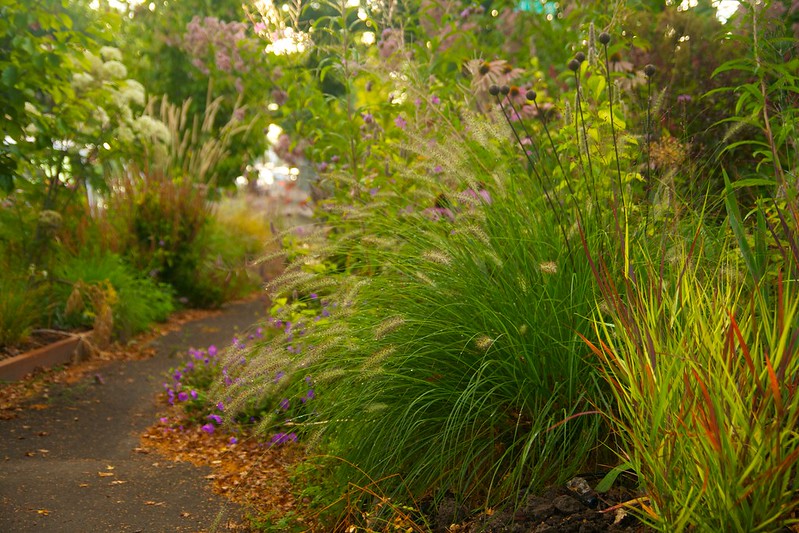
Even as sparse as it is right now...I have to say this planting feels much more at home in my garden than the willow ever did.
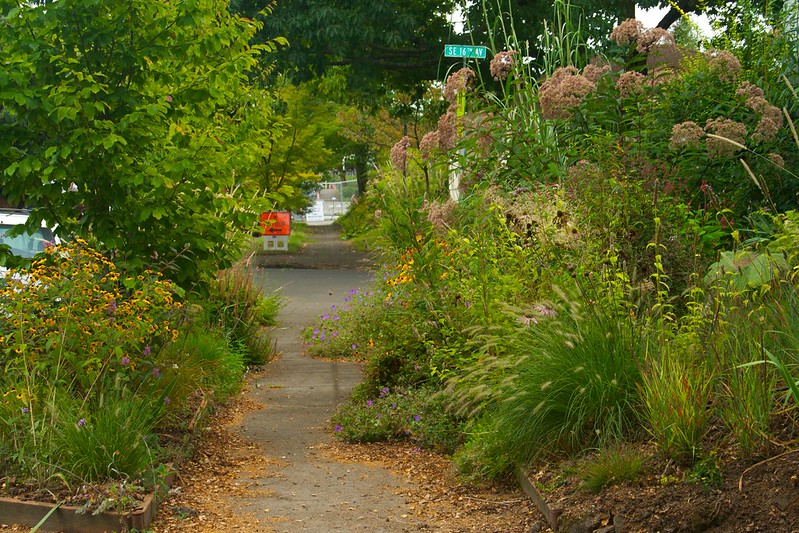
Also, unlike the Willow, which was fairly static during the growing season...
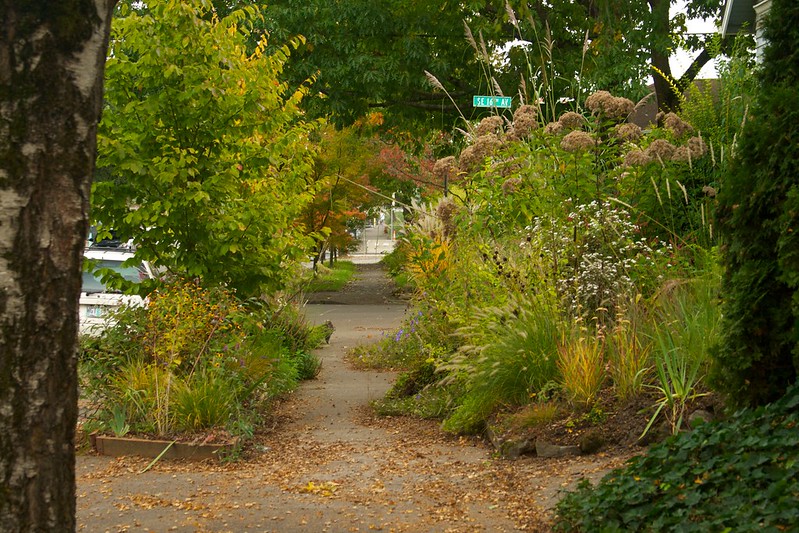
...grasses, of course, are constantly changing, marking the seasons...
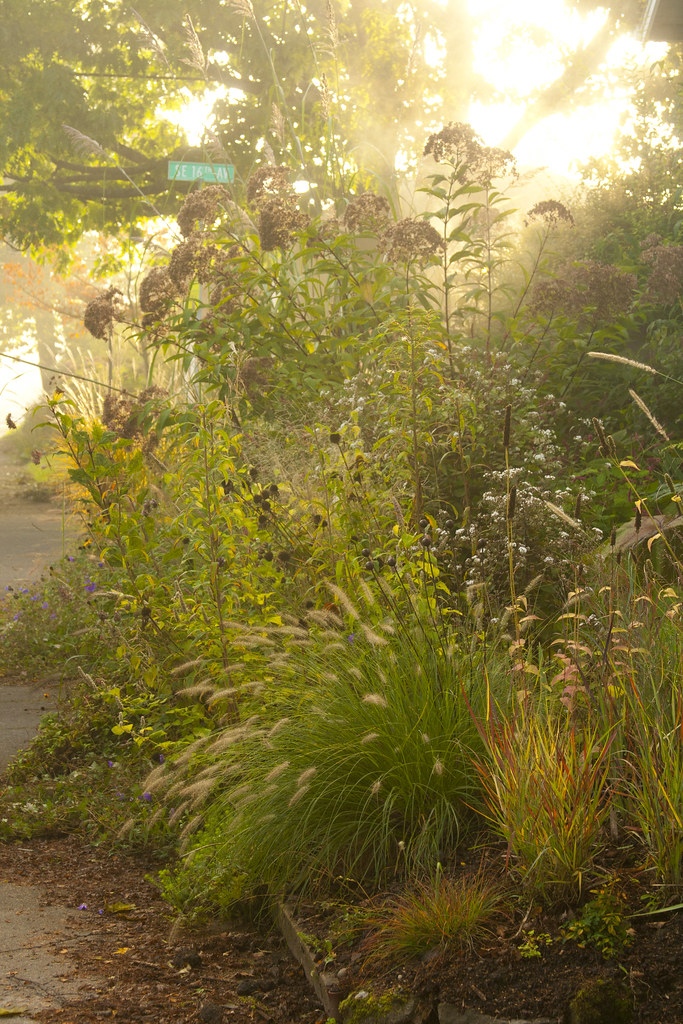
...and they celebrate the weather like nothing else!
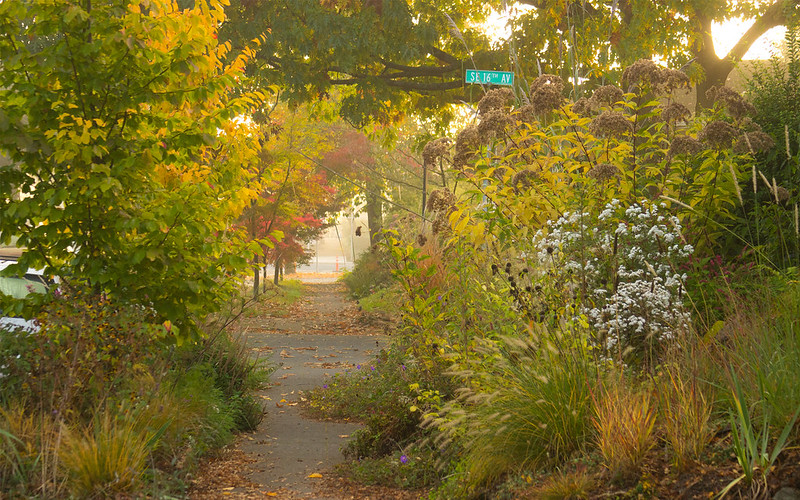
I think this new planting made a huge (positive) impact on this area of the garden...not only did it open up the garden spatially, but it let light into an area that had become a bit dreary.

Light, movement, color, texture.

I have to say, I shouldn't have waited as long as I did to make the change!

Then again, I wouldn't have appreciated it as much if I hadn't come to it in such a roundabout way (is there any other way in my garden...apparently not)!
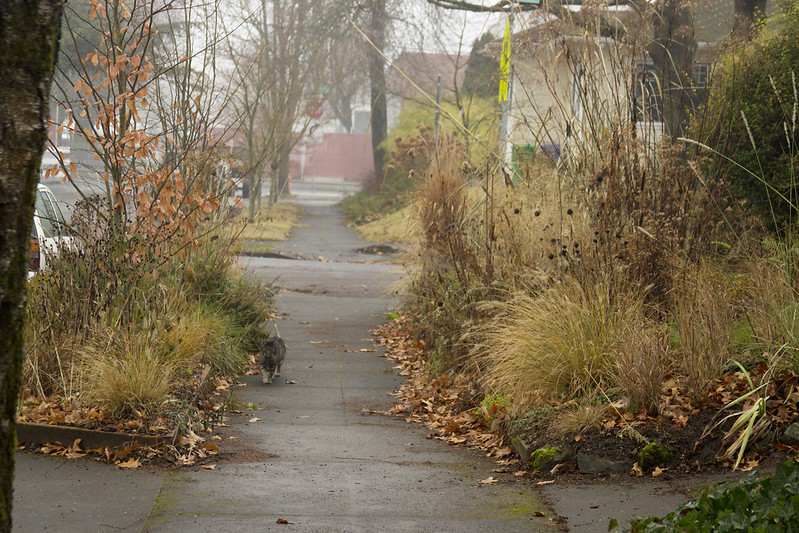
As the first rains fell and fall gave way to winter...I was still in love with this area.
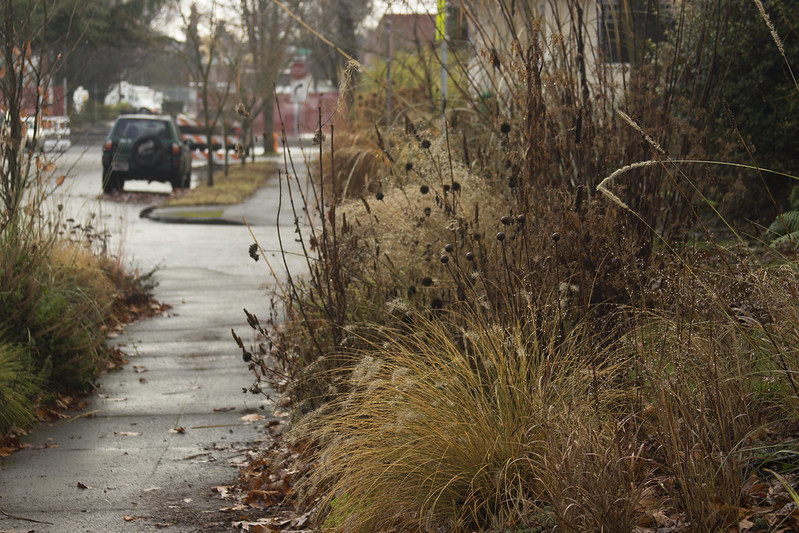
And still am today.

I think this was the last of my big (ok, big for me) garden projects this past year...and now I look forward to this season as spring is just around the corner. Have you ever taken the "long route" to a solution in your own garden?
PS - I've gotten a few emails recently from people who were unable to leave comments...please let me know if you are having problems as well...and so sorry for the inconvenience!
UPDATE: It appears that one possible solution (especially if you are using Chrome, which recently released an update) is a plugin conflict..especially one called "Ghostery". Toggling plugins off and on may fix the problem

